Physical Address
304 North Cardinal St.
Dorchester Center, MA 02124
Physical Address
304 North Cardinal St.
Dorchester Center, MA 02124
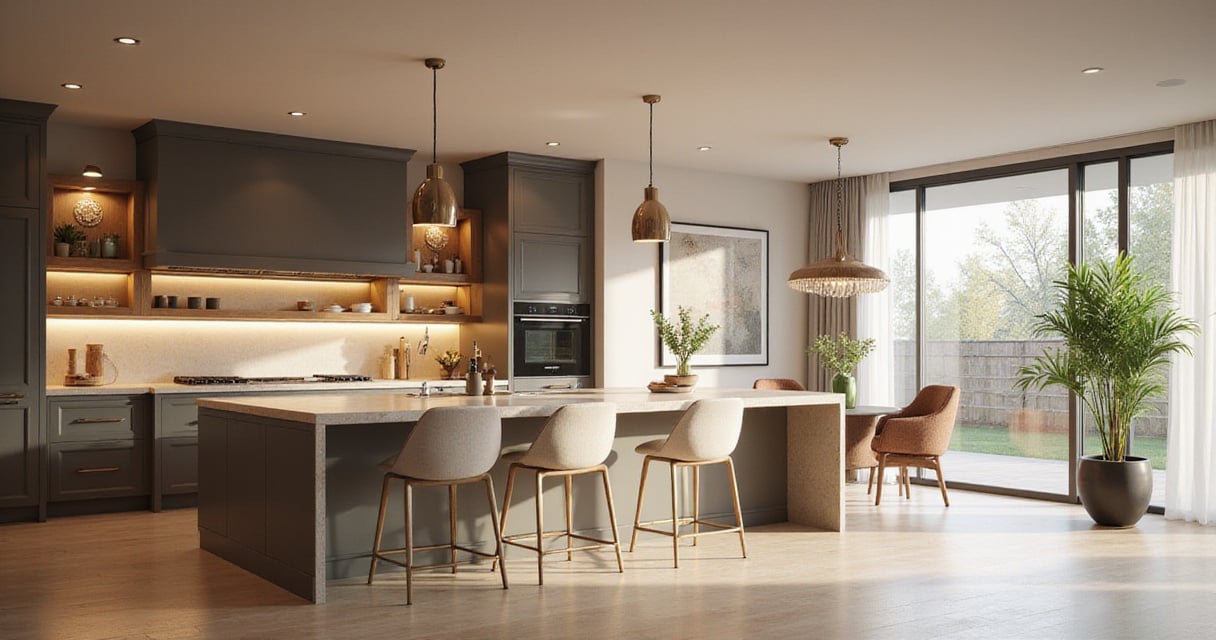
Transform your kitchen with 18 proven makeover strategies that maximize function and style. From budget-friendly updates to complete renovations - start planning today!
A well-loved book and a well-loved kitchen have something profound in common: they are the settings where our lives unfold. We find comfort in the familiar passages of a favorite novel and in the morning ritual of brewing coffee in a sunlit corner. As someone who spends his days designing sanctuaries for readers, I’ve noticed a surprising parallel. Many clients come to me asking for the perfect reading nook, a quiet escape, only to realize that the true source of their daily friction isn’t the lack of a cozy chair, but the subtle chaos emanating from the heart of their home—the kitchen.
The kitchen, much like a personal library, should be a place of inspiration and order, not a cluttered landscape of frustration. It’s where the story of your family is written, day by day, in shared meals and quiet moments. The good news is that rewriting this story doesn’t demand a complete tear-down. Just as a library can be transformed by thoughtful organization and better lighting, your kitchen can be reborn through a series of intentional choices.
This is not a checklist of fleeting trends. Think of it, instead, as a collection of guiding principles for shaping a space that serves the life you actually live. We’ll explore everything from the grand architectural strokes to the small, tactile details that make a room feel like home.
Before you so much as glance at a tile sample, we need to do some foundational work. In library design, my first question is never “What kind of shelves do you want?” It’s “How will this collection be used?” Will it be a working research library, a showcase for prized first editions, or a comfortable lending library for friends and family? The same Socratic inquiry applies to your kitchen. Who are its primary patrons? What are their daily rituals?

This discovery process is often where the real magic happens. You start to notice things. Maybe the island has become the unofficial family meeting point, yet it’s cast in a perpetual gloom by poor lighting. Perhaps you find yourself performing a frustrating ballet across the room every morning, just to assemble a single piece of toast. I once worked with a family whose main complaint was a lack of pantry space. But after we watched how they really lived, we realized the problem wasn’t storage; it was that the path from the fridge to the stove was constantly blocked by the recycling bin. A tiny change, a massive improvement in their daily narrative.
The goal here isn’t to create a sterile, hyper-efficient laboratory. It’s to build a space that honors the organic, sometimes messy, story of your life.
Every great story needs a structure, a framework that holds it together. In a renovation, that framework is your budget. Talking about money can feel restrictive, but I prefer to think of it as creating clarity. It’s the editor’s hand that helps you focus on the most important plot points. Establishing your investment range early saves you from the particular heartbreak of falling for a protagonist—say, a slab of Calacatta marble—that you simply can’t afford to bring home.
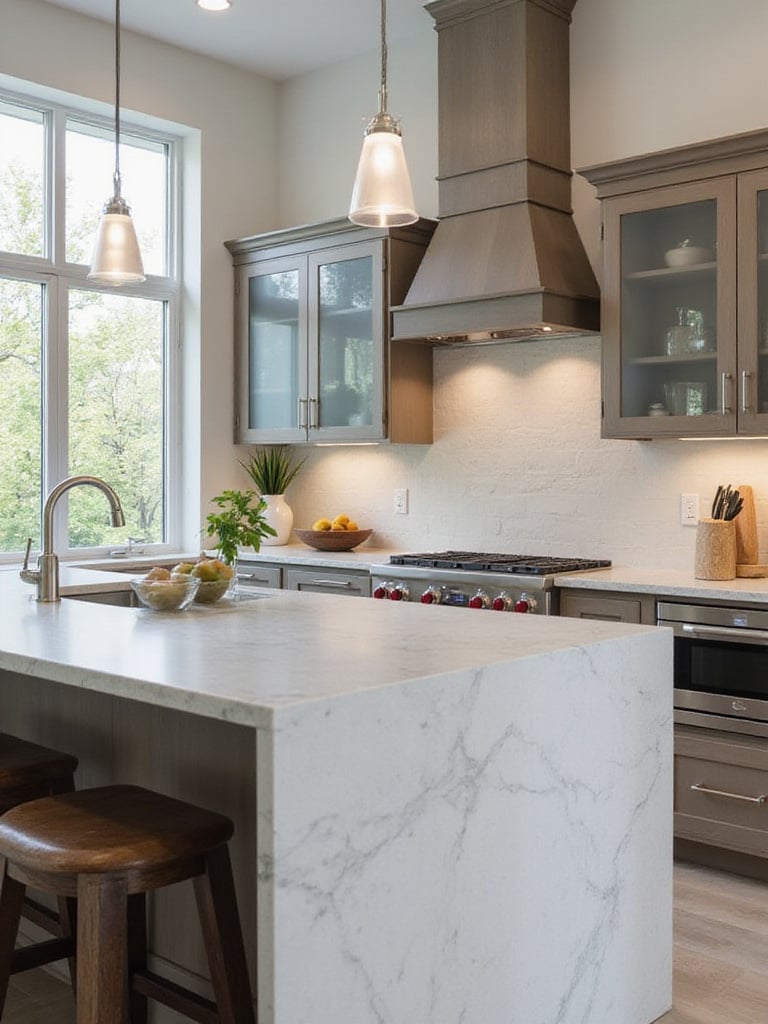
Kitchen projects can range from a few thousand dollars for a cosmetic refresh to the price of a luxury car for a complete overhaul. Honestly, those numbers can be intimidating. A good starting point is to understand the local landscape. A minor remodel, focusing on surfaces like countertops and a new backsplash, often falls in the $15,000 to $25,000 range. A major renovation, where you’re moving walls and replacing everything, can easily climb past $50,000. Knowing these chapters exist helps you decide which story you’re ready to write.
A clear budget isn’t a limitation; it’s a liberation. It allows you to make confident decisions, ensuring you have enough resources for quality craftsmanship where it truly counts.
Cabinets are the bookshelves of the kitchen. They are the single largest piece of furniture, defining the room’s character and consuming a significant portion of the budget—typically 35-40%. The decision you make here will shape the entire project, so it deserves careful thought. There are essentially three paths, each with its own narrative arc.
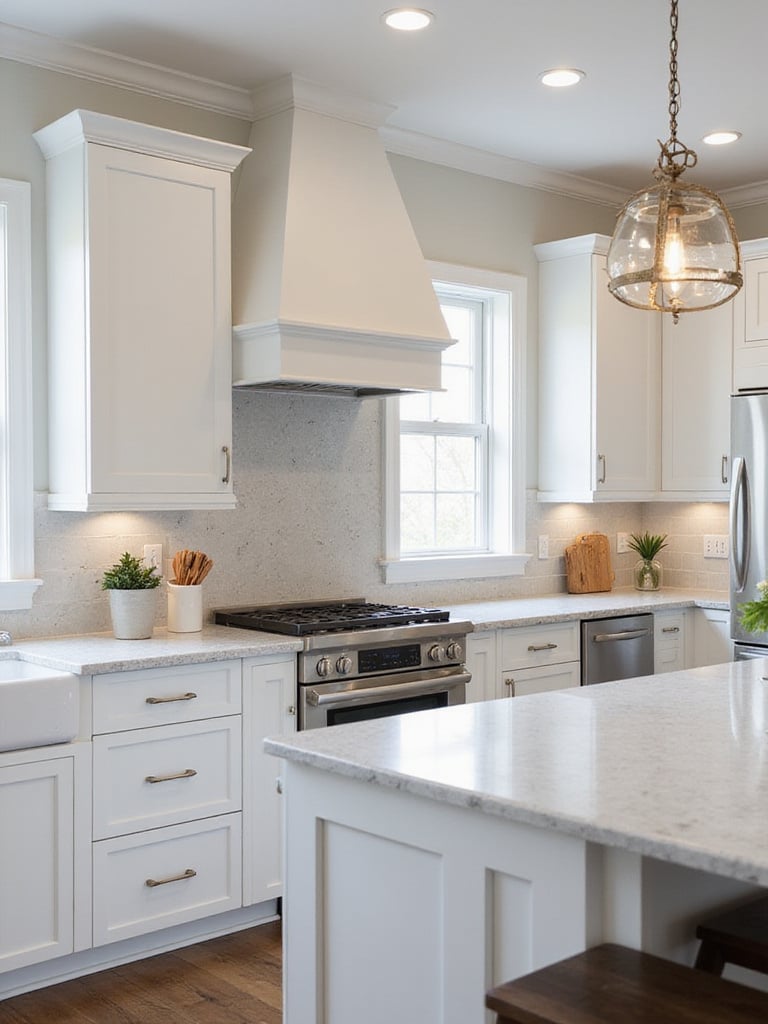
Refacing is like giving a beloved hardcover a new dust jacket and reinforcing its binding. You keep the existing cabinet boxes but replace the doors and drawer fronts. It’s a brilliant option if your current layout works and the cabinet structures are sound. It dramatically changes the look for a fraction of the cost and disruption of a full replacement. But if your cabinets are falling apart or the layout is fundamentally flawed, you’re better off starting a new chapter. Full replacement with stock or semi-custom cabinets offers more flexibility, while a fully custom design is like commissioning a master bookbinder—the possibilities are endless, but so is the investment.
What I always tell my clients, whether we’re talking about library shelves or kitchen cabinets, is to prioritize function first. The most beautiful cabinet is useless if it doesn’t work for you. Upgrades like soft-close hinges, full-extension drawers that let you see what’s in the back, and clever interior organizers are what truly elevate your daily experience.
A few years ago, a client with a beautiful collection of mid-century pottery was struggling with their dark, dated 1990s oak kitchen. We refaced the cabinets with simple, flat-panel doors painted a soft white, added deep drawers for their pottery, and installed new hardware. It felt like we had added a new wing to the house, but all we really did was give the existing story a brilliant new edit.
The countertop is the kitchen’s primary work surface. It’s the sturdy desk where you chop vegetables, roll out dough, sort the mail, and help with homework. It must be durable enough for your family’s life while also being a surface you love to see and touch every day. This choice is deeply personal.
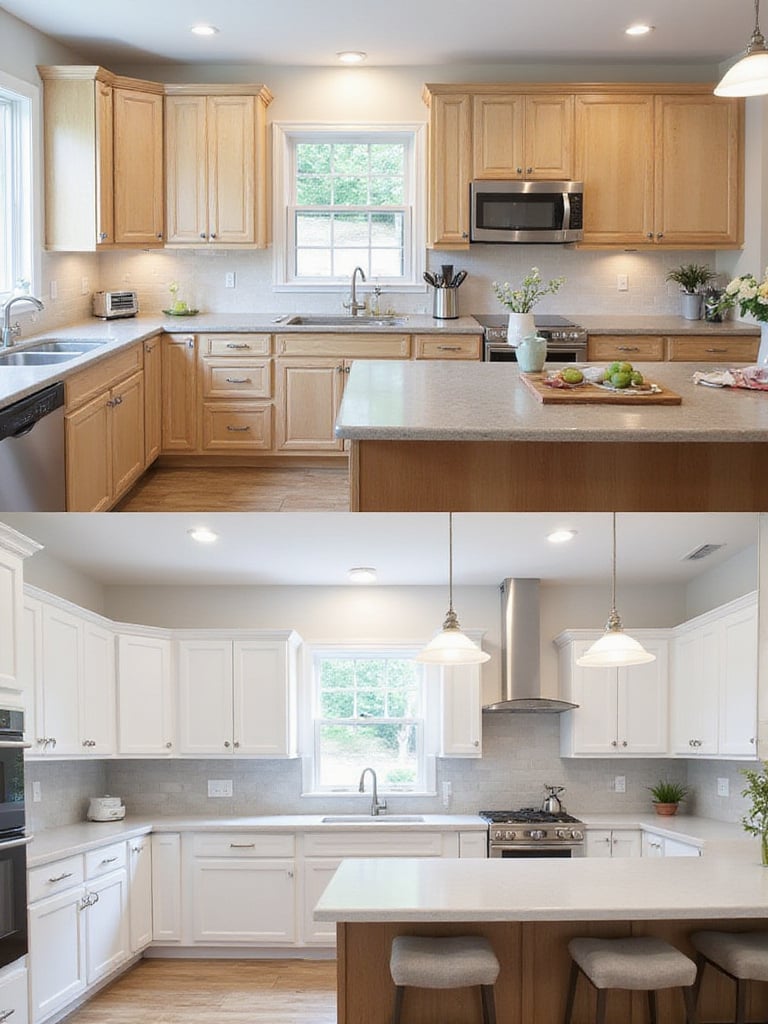
Engineered quartz has become the popular choice, and for good reason. It’s the workhorse of the countertop world—incredibly durable, non-porous (so it won’t stain from wine or coffee), and requires virtually no maintenance. Unlike natural stone, its patterns are consistent. Granite, its more tempestuous cousin, offers breathtaking, one-of-a-kind natural beauty and is fantastic with heat, but it does ask for a bit more care, like periodic sealing. Then there’s butcher block, which brings an incredible warmth and character, like a well-worn leather armchair. It’s beautiful, but it’s a living surface that needs oiling and will show the marks of your life’s work.
Here’s where you need to be honest with yourself. Are you an avid baker who would appreciate the cool, smooth surface of marble (even with its propensity to etch)? Or a busy parent who just needs something that can stand up to spilled juice and hot pans without a second thought? The right countertop will feel like a silent, supportive partner in your daily life.
A quality countertop is an investment that pays you back every single day, both in simple function and in the quiet pleasure it brings to your home.
Kitchen flooring is the unsung hero of the home. It endures a constant barrage of spills, dropped utensils, heavy traffic, and muddy paws. It must be a stoic foundation—tough, easy to clean, and comfortable to stand on for long periods. Like the fundamental architecture of a great library, it needs to be chosen for long-term performance, not just fleeting style.
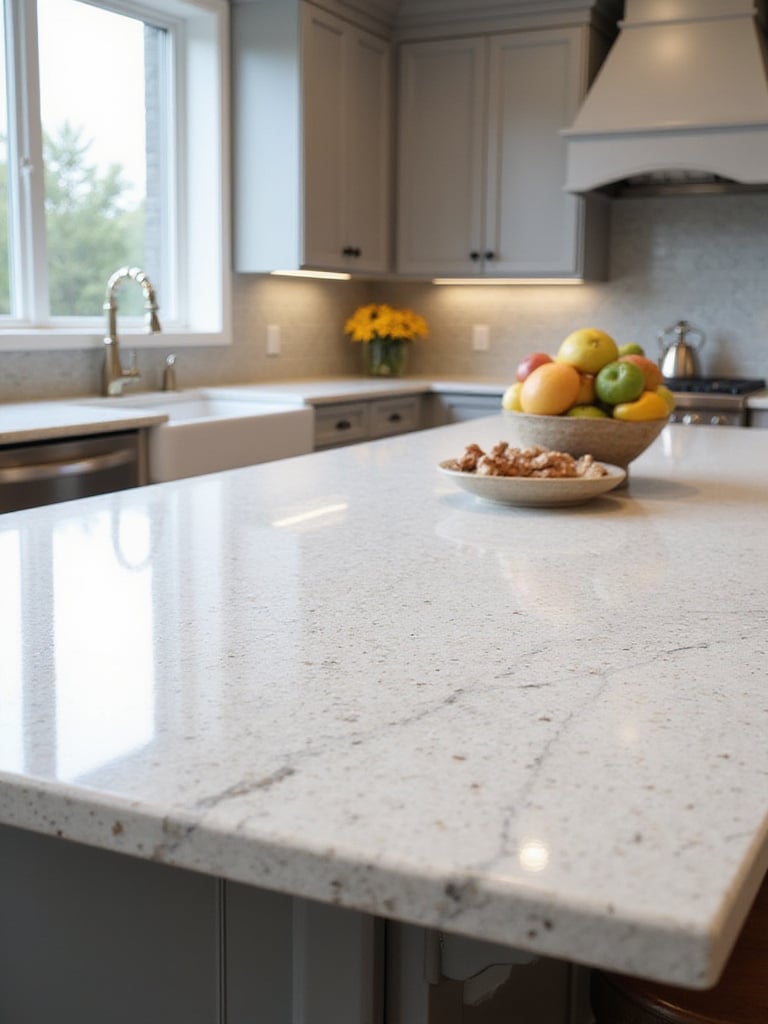
For years, the choice felt like a compromise between beauty and practicality. Hardwood is beautiful but can be unforgiving with water. Tile is indestructible but can be cold and hard underfoot. Then Luxury Vinyl Plank (LVP) came along and changed the conversation. Modern LVP offers the visual warmth of real wood but with incredible water resistance and durability. The good stuff is so convincing, you’d be hard-pressed to tell the difference. Porcelain tile remains the champion of durability, and today’s options include gorgeous wood-look planks and stone-look slabs that offer the best of both worlds.
I find that the feeling underfoot is an often-overlooked aspect. When you’re standing at the counter prepping for a big family meal, you’ll be grateful for a floor that has a bit of give. If you do go with tile, especially in a colder climate, weaving radiant heat into the plan during installation is a small luxury that feels like an absolute game-changer on a cold winter morning.
Your floor grounds the entire design, both literally and figuratively. A thoughtful choice here creates a durable, beautiful stage for your daily life.
This is where I get really passionate. In library design, lighting is everything. It dictates mood, ensures comfort, and makes the simple act of reading possible. The exact same principles apply with even greater force in a kitchen. A single, flat overhead light is the enemy of good design. It creates shadows, strains your eyes, and makes a space feel sterile. A great kitchen, like a great reading room, relies on layers of light.
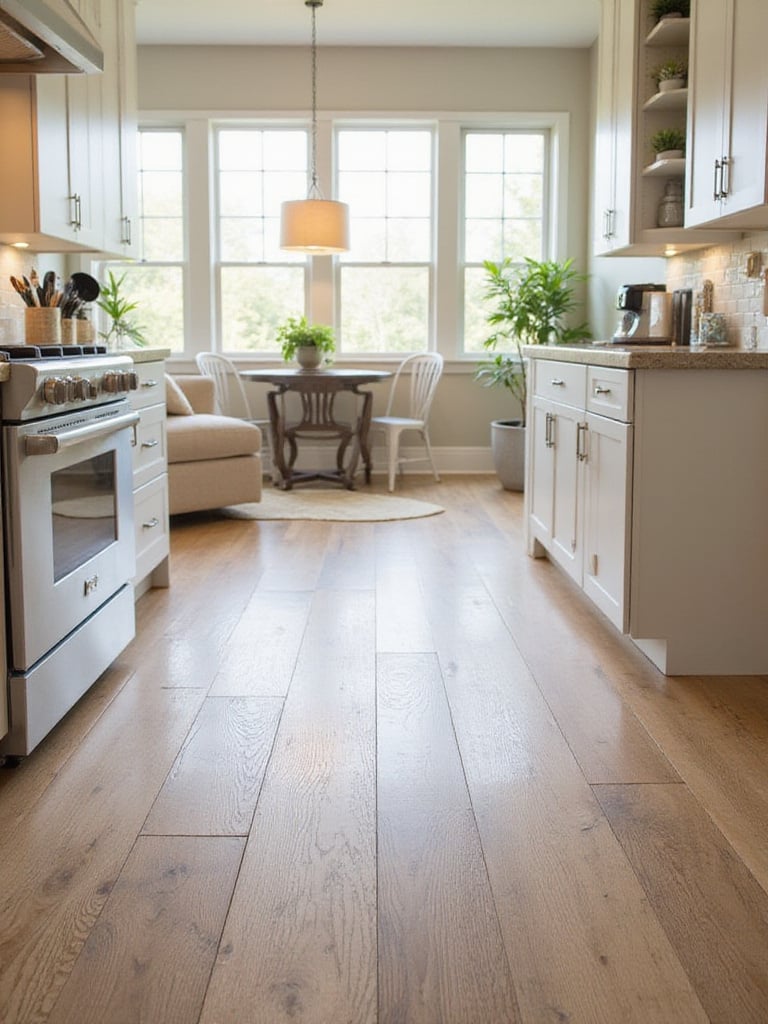
Think of it in three parts:
And here’s the secret: put everything on a dimmer. Everything. The ability to shift from bright, functional task lighting for cooking to a soft, warm glow for a late-night conversation is what makes a kitchen truly versatile. It’s what allows the room to change its mood along with you.
“The biggest transformation in kitchen design over the past decade has been the sophistication of lighting options,” notes certified lighting designer Maria Santos. “Homeowners now understand that proper lighting is just as important as beautiful countertops or custom cabinetry for creating a truly functional and inviting space.”
When the layers of light work together, they do more than just illuminate. They create depth, highlight beauty, and make the room feel alive.
Appliances are the hardworking reference section of your kitchen. They are tools that need to be reliable, efficient, and a pleasure to use. You don’t necessarily need to replace everything at once. A strategic upgrade, focusing on the appliance that causes you the most daily grief, can be a smarter way to manage your budget.

Lately, I’ve seen more and more clients invest in professional-style ranges. As we’ve all spent more time cooking at home, the appeal of better temperature control and more powerful burners has grown. Another smart move is the counter-depth refrigerator. It sits nearly flush with your cabinets, creating a clean, built-in look that makes a surprisingly huge impact on the feel of the room, without the cost of a true built-in model.
Don’t overlook the quiet performers. Modern dishwashers are so silent you barely know they’re running, a blessing in an open-concept home. And always look for the ENERGY STAR rating. It’s not just about saving a little on your utility bill; these appliances are often better engineered, offering quieter operation and more advanced features that improve your quality of life.
Choosing the right appliances is about investing in the long-term usability and enjoyment of your kitchen.
A disorganized library is a tragedy. All that knowledge, inaccessible. A disorganized kitchen is a daily torment. Effective storage is about more than just cramming things into cupboards; it’s about creating systems of access and order. It’s the Dewey Decimal System for your pots and pans. The goal is to make finding what you need feel intuitive and effortless.

The single biggest game-changer in kitchen storage is replacing standard base cabinet shelves with deep, full-extension drawers. Just think about it. No more getting on your hands and knees to excavate a long-lost pot from the dark recesses of a cabinet. You simply pull the drawer out, and everything is visible and accessible. It’s revolutionary. For corners, modern pull-out systems have replaced the clunky old Lazy Susan, making every square inch of that awkward space usable.
And let’s talk about the pantry. A well-organized pantry can feel like your own personal, well-curated market. Decanting dry goods like flour, pasta, and cereal into clear, airtight containers not only looks beautiful but also lets you see at a glance what you have. It prevents you from buying a third box of linguine you didn’t know you had.
This is where you design for your specific life. If you have small children, a low drawer filled with their snacks and dishes empowers them to be more independent. If you’re a serious baker, a cabinet with vertical dividers for your baking sheets and trays is a small detail that brings immense satisfaction. It’s about creating a system that anticipates your needs.
If cabinets are the bookshelves, the backsplash is the cover art. It’s a relatively small area that has an outsized impact on the kitchen’s personality. This is your chance to inject color, pattern, and texture. Because it’s a smaller investment than countertops or cabinets, it’s a wonderful place to take a bit of a creative risk.

The timeless white subway tile is still popular, but designers are using it in more interesting ways—stacking it vertically for a modern look, laying it in a herringbone pattern, or using a contrasting grout color to make it pop. But don’t feel locked into tile. A single, seamless slab of the same material as your countertop creates a dramatic, high-end look that is also incredibly easy to clean. Glass tile can bounce light around a smaller kitchen, while natural stone adds an earthy, organic texture.
One of the most effective strategies I’ve seen is to extend the backsplash all the way to the ceiling behind the range or on a specific feature wall. It’s a bold move that turns a functional element into a true architectural feature. It signals that every detail in this room was considered.
The right backsplash is the finishing touch that pulls the whole composition together, giving your kitchen its unique voice.
Color is language. It communicates emotion and mood before we even process the form of a room. In a kitchen, wall color has the power to make the space feel larger and brighter or more intimate and cozy. Much like choosing the right lighting for a reading room, choosing the right color is about creating an atmosphere that supports the room’s purpose.

Light, neutral colors are a classic for a reason. They act as a quiet, unassuming backdrop, reflecting light and allowing your cabinetry and countertops to be the stars. A soft, warm gray or a creamy off-white provides a timeless canvas that you can easily update with accessories. But don’t be afraid of color! A deep, moody blue or a rich, earthy green on an accent wall can create a stunning focal point and add a layer of sophistication. It can define a breakfast nook, making it feel like its own little room.
Think about the psychology of the colors you choose. Blues and greens are often associated with calmness and nature, while warm yellows and terracottas can feel more energetic and convivial. Also, remember to buy paint specifically formulated for kitchens. These paints have a higher sheen (satin or semi-gloss) that makes them resistant to moisture and much easier to wipe down.
As the sun moves across the sky during the day, a thoughtfully chosen wall color will shift and change, revealing different nuances. It’s a subtle form of life and movement in the room.
Cabinet hardware is the punctuation of your kitchen’s design story. It’s a small detail, but it can completely change the tone and feel of your cabinets. Swapping out dated, builder-grade knobs for something with more substance and style is one of the most immediate and cost-effective upgrades you can make. It’s like replacing the flimsy paperback cover of a classic with a handsome, library-bound edition.
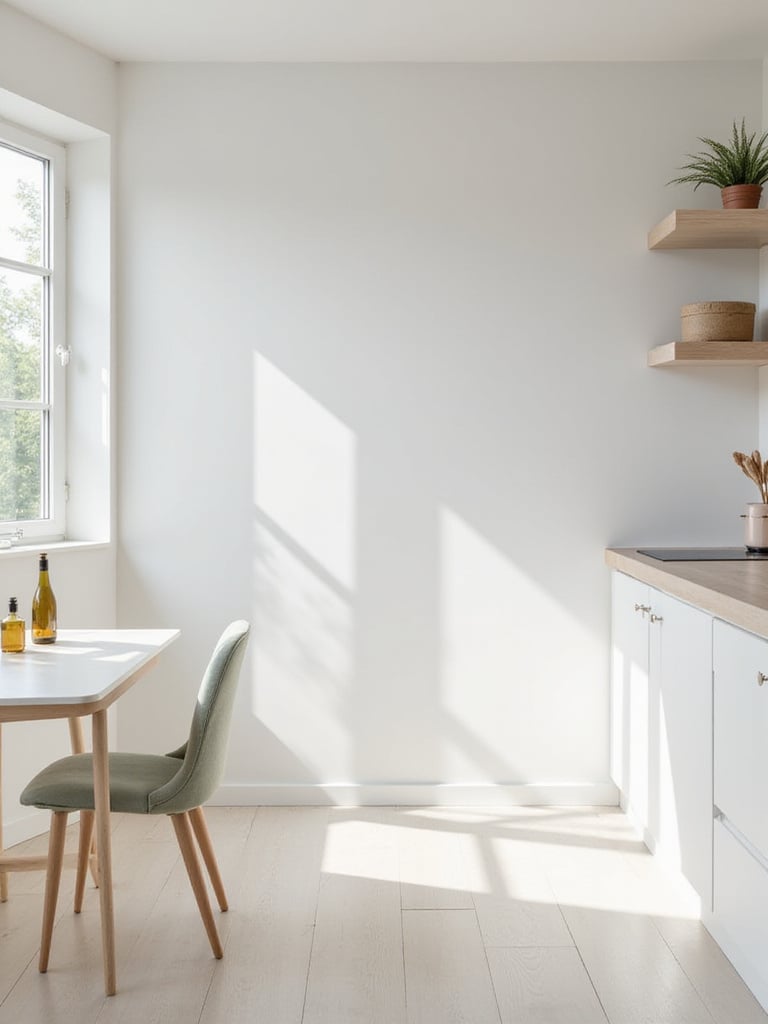
Current trends lean toward clean lines and warmer metals like brushed brass and aged bronze, but matte black and classic stainless steel remain timeless choices. What’s more important than the trend, however, is the feel. I’ve noticed a shift toward more substantial, oversized pulls, especially on lower cabinets and drawers. They not only look great but are also more ergonomic and easier to use, a small but meaningful consideration for all ages.
The key is to think of hardware as a unifying element. It should have a conversation with your faucet, your light fixtures, and your appliances. They don’t all have to match perfectly—in fact, a little mixing of metals can add a sophisticated, collected-over-time feel—but they should feel like they belong to the same family.
It’s a small change, but the daily, tactile pleasure of using well-made, beautiful hardware is one of those details that elevates a kitchen from merely functional to truly special.
For decades, kitchen design was ruled by the “work triangle”—the sacred geometric path between the refrigerator, sink, and stove. And to be fair, it’s a useful concept. But our lives, and our kitchens, have become more complex. The old triangle doesn’t account for a second cook, kids doing homework at the island, or a dedicated coffee station. It’s a bit like insisting a library can only have one reading chair.

I encourage my clients to think less about a rigid triangle and more about “zones” or “activity hubs.” This approach feels much more natural for the way we live now. You might have:
“The traditional work triangle remains relevant, but today’s kitchens often benefit from work zones that accommodate multiple users and diverse activities,” explains certified kitchen designer James Mitchell. “The key is creating logical relationships between related functions while avoiding conflicts.”
The goal is to create a natural, intuitive flow that minimizes traffic jams and makes it easy for multiple people to use the kitchen at the same time without getting in each other’s way. A well-zoned kitchen just works. Everything feels like it’s in the right place, and your movements become more efficient and graceful.
Natural light is the ultimate luxury. It costs nothing, yet it can completely transform the feeling of a room. It makes colors appear truer, makes spaces feel larger and more open, and connects us to the rhythm of the day. In any project I design, whether a reading room or a kitchen, maximizing natural light is a top priority.
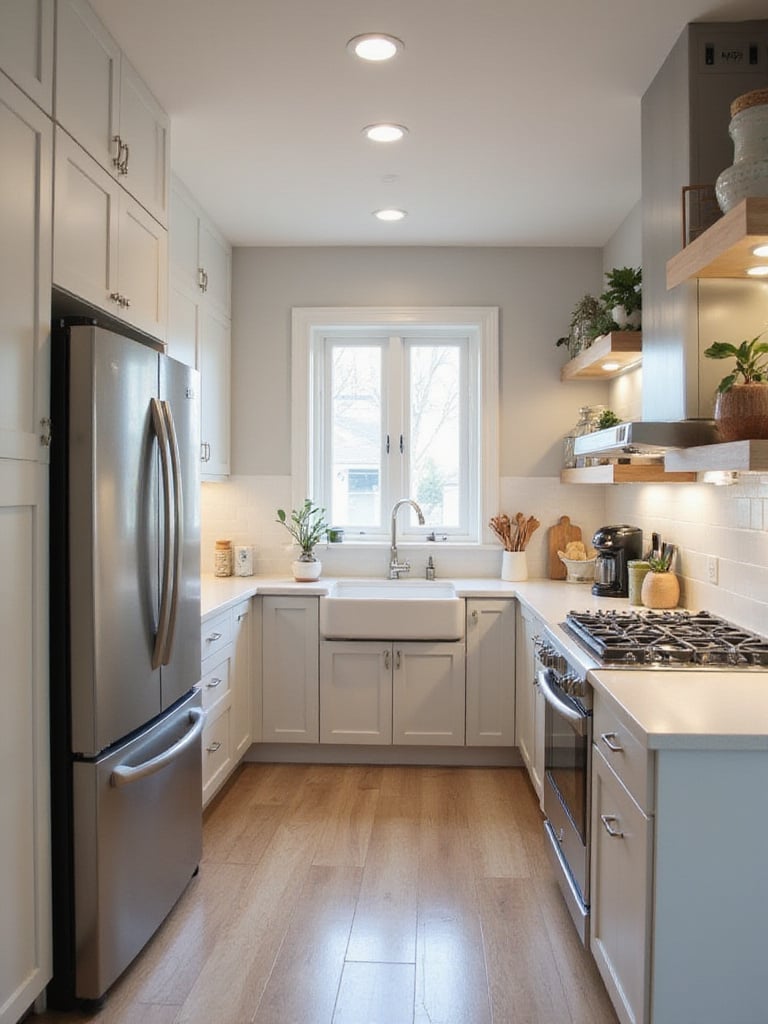
Start with your windows. Are they being suffocated by heavy, dated treatments? Swapping out old drapes or Venetian blinds for something lighter can make an astonishing difference. Light-filtering cellular shades or simple sheer panels offer privacy while still allowing that beautiful, diffuse light to pour in. “Top-down, bottom-up” shades are particularly brilliant, as they let you bring in light from the top while maintaining privacy below.
If you’re undertaking a more significant renovation, consider adding or enlarging windows. A new window over the sink or a skylight over the island can be an absolute game-changer, turning a dark corner into the most cherished spot in the house. And remember that every surface in the kitchen can act as a partner in this endeavor. Light-colored walls, glossy backsplashes, and reflective countertops will catch the natural light you have and bounce it around the room, amplifying its effects.
When you make natural light a central character in your kitchen’s design, the entire mood of your home can shift for the better.
The kitchen island has become the communal table of the modern home. It has evolved from a simple prep space into the multi-functional heart of the kitchen—a place for cooking, eating, working, and gathering. A well-designed island can solve a multitude of problems, providing much-needed storage and counter space while creating a natural hub for social interaction.
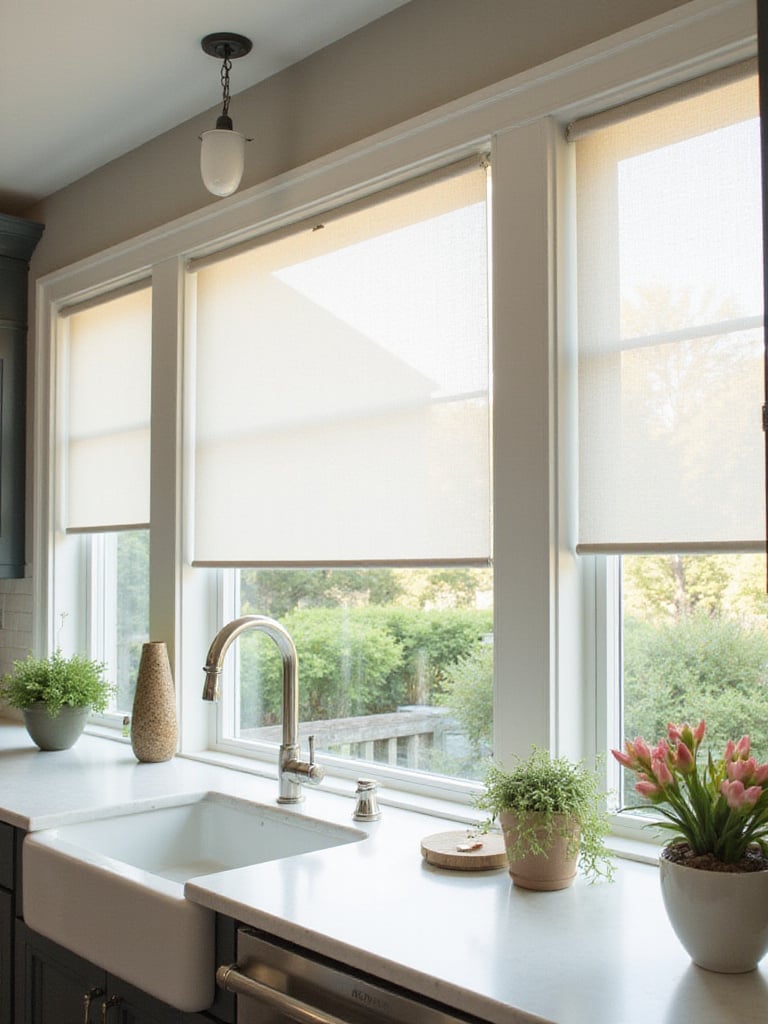
The key to a successful island is proportion and clearance. You need at least 42 inches of clearance on all sides for comfortable traffic flow; 48 inches is even better if you have the space, as it allows two people to pass each other easily. The island’s size should feel appropriate for the room—an island that’s too big can make a kitchen feel cramped, while one that’s too small can look lost and insignificant.
This is your chance to add specialized functions. A small prep sink on the island can be a lifesaver when multiple people are cooking. Integrating a microwave drawer into the island gets it off the counter, and of course, adding electrical outlets is a must for charging devices and using small appliances.
When it comes to seating, comfort is paramount. You need about 24 inches of width per person to avoid knocking elbows, and a deep enough overhang (at least 15 inches for counter-height seating) for comfortable knee space. The island is often where the stories of the day are shared. Making it a comfortable and inviting place to linger is just as important as its more utilitarian functions.
This is one of the most overlooked but crucial elements of a great kitchen. Proper ventilation isn’t just about getting rid of the smell of burnt fish. It’s about protecting your health and your home. An effective ventilation system removes cooking odors, grease particles, steam, and heat, preventing them from spreading through your house, settling on your surfaces, and impacting your indoor air quality.
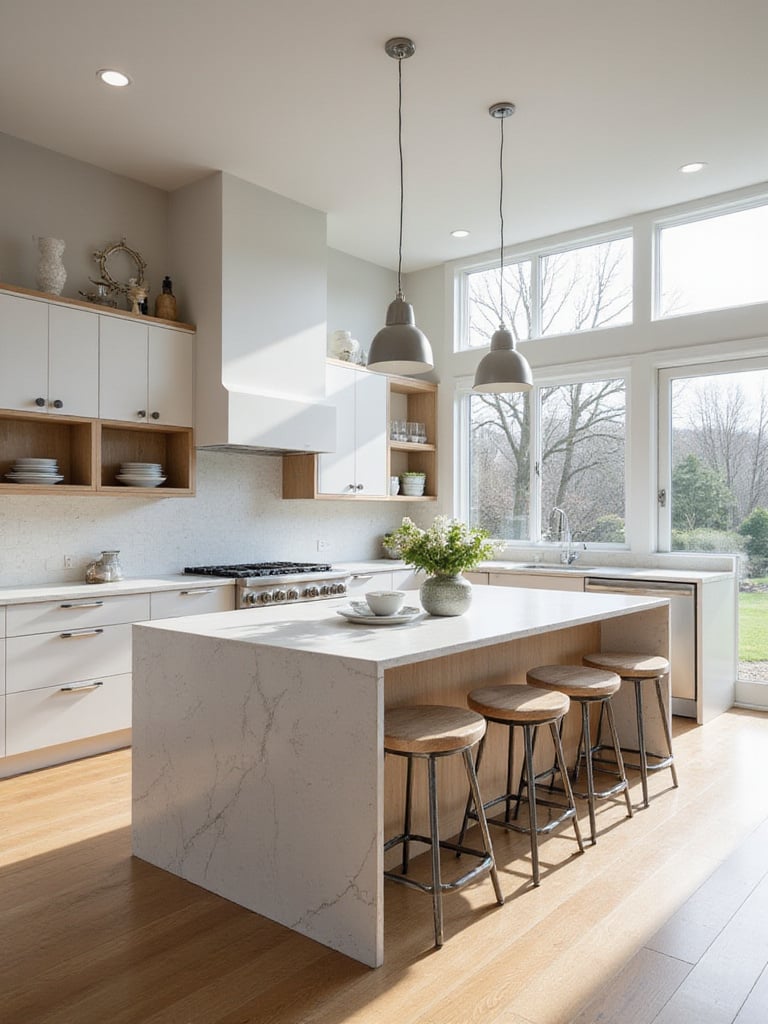
You’ll see a measurement called CFM, which stands for “cubic feet per minute.” This tells you how much air the hood can move. A high-output professional-style gas range requires a much more powerful hood (higher CFM) than a standard electric cooktop. It’s critical to match the power of your ventilation to the power of your cooking appliances.
Here’s the thing: a hood that simply recirculates the air through a filter is better than nothing, but it’s not a real solution. A system that is ducted to the outside is vastly superior. It physically removes the contaminants from your home. This is not the place to cut corners. A good ventilation system protects your investment in new cabinets and paint, makes your home smell better, and creates a more comfortable environment for cooking.
Think of it as the lungs of your kitchen. Good ventilation allows the whole space to breathe.
Every renovation project involves a series of decisions about what you can realistically tackle yourself versus what is best left to the professionals. An honest assessment here can save you an enormous amount of money, time, and heartache. This isn’t about pride; it’s about strategy.
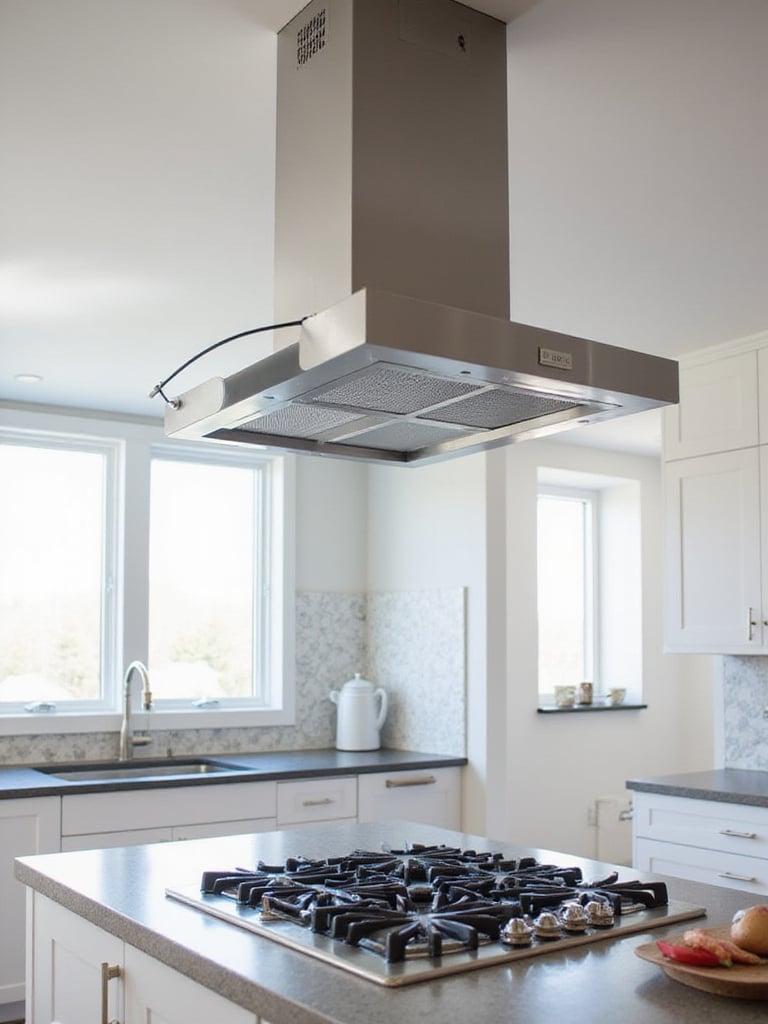
There are many tasks that are perfect for a hands-on homeowner. Painting, installing a simple tile backsplash, changing out cabinet hardware, and even some light demolition can be incredibly rewarding. These tasks offer huge savings on labor costs and give you a real, tangible connection to your new space. However, some things are firmly in the professional’s domain. Electrical work, plumbing, and anything involving gas lines or moving walls are non-negotiable. The risks—to your safety and your home—are just too high.
Think about the cost of a mistake. If you tile a backsplash crookedly, the fix is expensive and frustrating. If you wire an outlet incorrectly, the consequences can be catastrophic. Professionals bring experience, the right tools, and—importantly—insurance and warranties that protect your investment. A hybrid approach often works best. You can act as the general contractor, handle the painting and demolition, and then bring in the licensed pros for the technical installations.
“The most successful kitchen renovations combine homeowner involvement in appropriate tasks with professional expertise where it matters most,” notes contractor Lisa Rodriguez. “This approach maximizes both budget efficiency and final quality.”
Knowing your own skillset and limitations is a sign of wisdom, not weakness. It ensures the story of your renovation has a happy ending.
Smart technology is weaving its way into every room of the house, and the kitchen is no exception. The key is to choose integrations that genuinely simplify your life, rather than adding a layer of technological complexity for novelty’s sake.
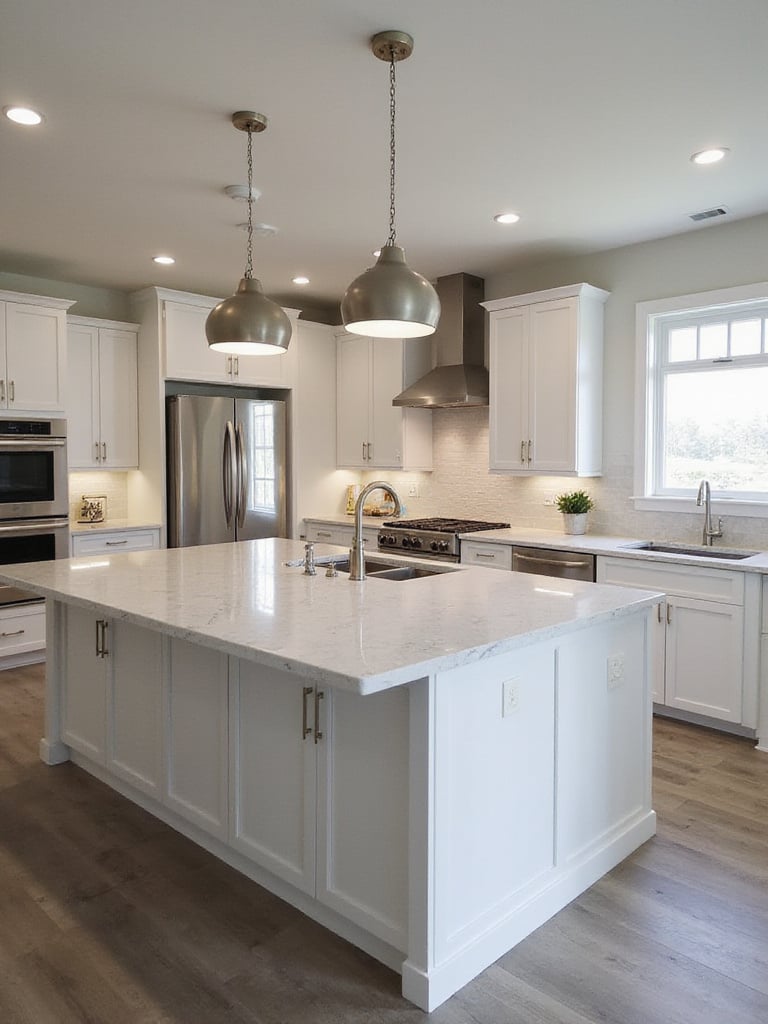
The most practical applications are often the simplest. Smart lighting is a great place to start. Being able to say, “Hey Google, turn the kitchen lights to 50%” when your hands are covered in dough is a small but legitimate luxury. Motion-activated faucets are another feature that quickly moves from “cool gadget” to “how did I live without this?” Smart appliances can offer real convenience, like an oven you can preheat on your way home from work or a fridge that tells you if you’re out of milk while you’re at the store.
If you’re planning a major renovation, think about the infrastructure. Now is the time to add extra outlets with USB ports, ensure your Wi-Fi signal is strong in the kitchen, and run any necessary wiring. It’s far easier and cheaper to plan for these things now than to try and retrofit them later.
The best technology, like a good footnote, should be helpful and unobtrusive, adding valuable information without disrupting the main text.
The final, and perhaps most important, layer is infusing the space with your own character. This is what transforms a beautifully designed kitchen into your kitchen. This is the act of styling, of curating the objects that tell your family’s story. It’s the difference between a pristine but soulless showroom and a warm, living, breathing room.
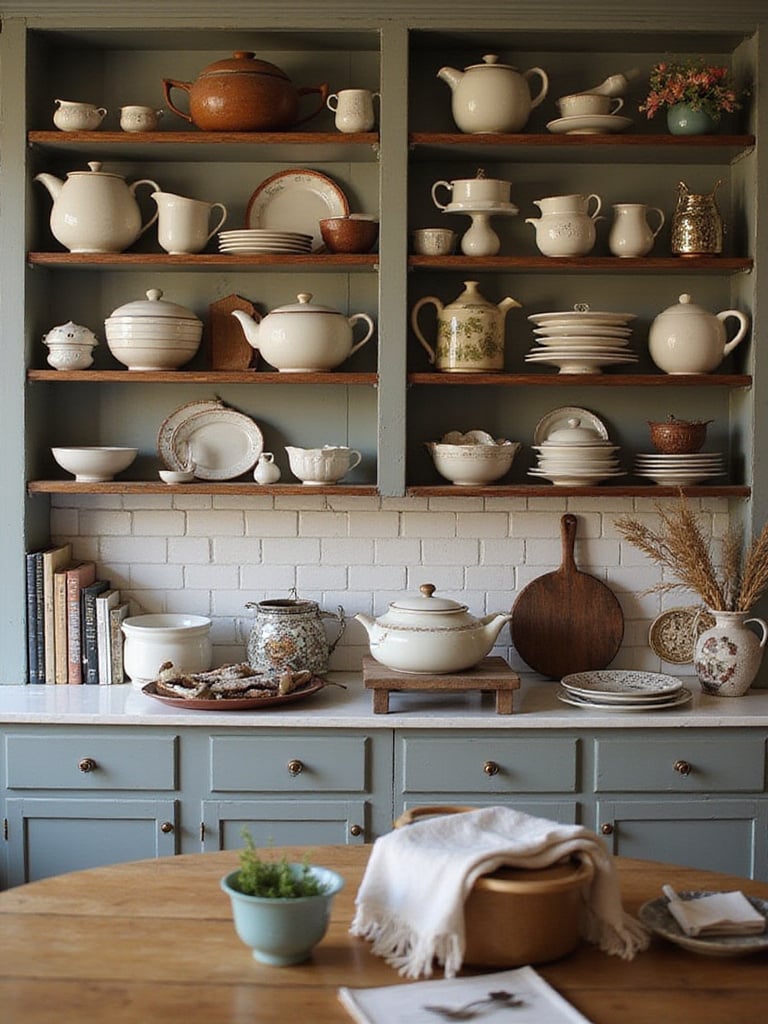
This is where you display your collection of antique mixing bowls on an open shelf. It’s where you place a pot of fresh basil on the windowsill. It’s where you hang your child’s first painting. Don’t be afraid to mix the high with the low, the new with the old. That beautiful serving platter you inherited from your grandmother? Don’t hide it in a cabinet; lean it against the backsplash. Your collection of well-loved, food-stained cookbooks tells a far more interesting story than a row of pristine, unread design books.
Bring in texture and life. A small, washable rug can add a layer of softness and color. A vase of fresh flowers, a bowl of lemons, a wooden cutting board left out on the counter—these simple, organic elements keep the space from feeling too sterile. This is your chance to be the curator of your own life.
This final act of styling is what gives your kitchen its soul. It’s the emotional resonance that makes a space feel not just designed, but truly cherished.
A kitchen renovation is so much more than a construction project. It’s an opportunity to re-examine the rhythms of your daily life and to create a space that supports and enhances them. By thinking of your kitchen as the narrative center of your home, you can move beyond simple aesthetics and toward a design that is deeply functional, personally meaningful, and a lasting source of joy.
The most successful transformations I have ever witnessed, whether in a grand library or a modest kitchen, always began with careful thought. They grew from an understanding of how the space needed to serve its people. By applying these principles—by defining your story, allocating your resources wisely, and focusing on the details that enrich your daily experience—you can create a kitchen that will be a beautiful and beloved backdrop for your family’s story for many years to come.